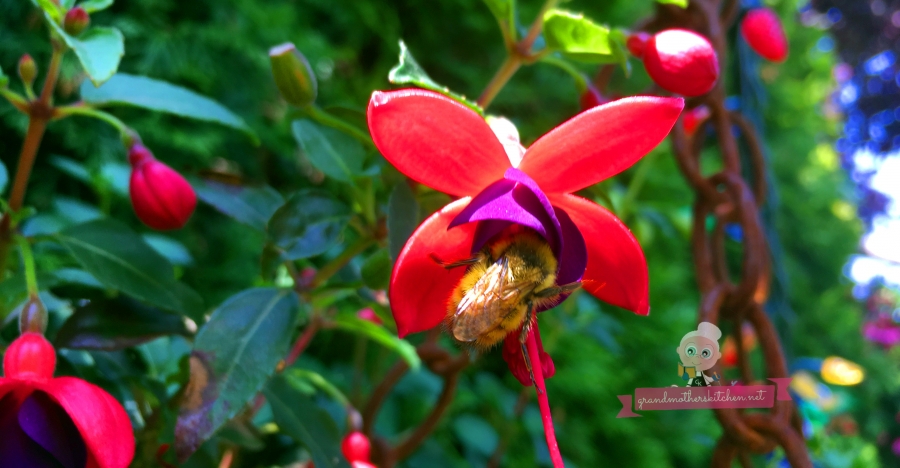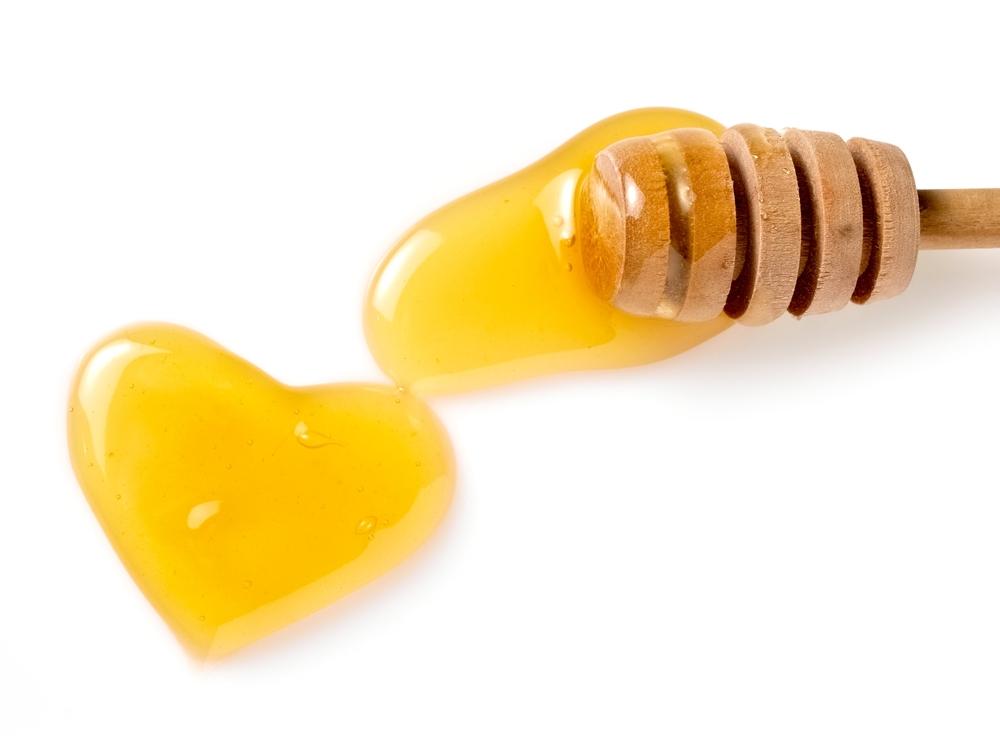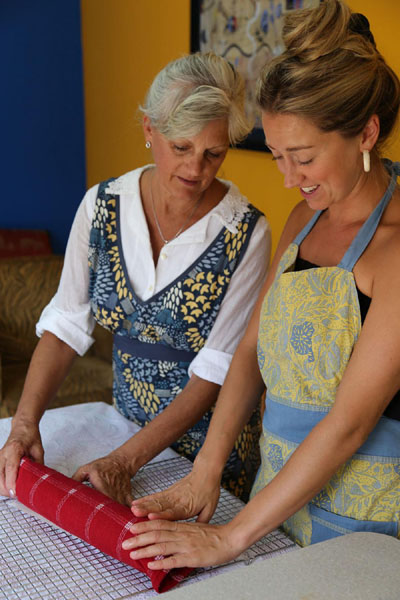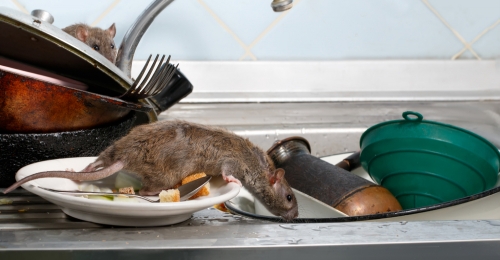How to Choose Honey and Why We Love Honey Bees

About this Recipe
About The Author: Article written by Heidi Rasmussen, co-founder of Grandmother’s Kitchen, nutritionist (BSc Nutrition & Dietetics), yoga teacher (RYT), writer, and wellness researcher from British Columbia, Canada.
Why I Love Honey Bees
I grew up near a lake and have vivid memories of floating around and rescuing honey bees that had flown into the lake and were going to drown. I felt so connected to these little creatures, letting them crawl on my hands with certainty that they would not hurt me. I loved to watch them lick themselves dry and recover before flying away to the gardens to make more honey.
My affinity towards bees may have been because my Grandpa was a honey bee farmer and so we grew up watching him go out to the hives to care for the bees and bring back raw honey for us to savor.
My Grandmother also loved the bees in her garden and had honey bee paraphernalia, embroidery and other hand made items that honored the bees everywhere. We called her Grandma Bee (with the double ‘e’) probably because we could feel her love for bees in everything she did.
I have felt a friendship with honey bees far before I understand their importance to our earth and now understand that there is more we can do to rescue them from the many things that threaten them in our modern world.
Human Health Benefits of Honey
Honey is an extremely valuable natural resource and has been appreciated by humans all over the world including Rome, Greece, China, Egypt and Centra America since ancient days, nearly 5500 years ago.(2)
A 2011 nursing study (4) found that when honey was used as a dressing, that subjects with pressure ulcers healed 4 times the rate compared to the control group using standard dressings of ethoxy-diaminoacridine plus nitrofurazone dressings. The conclusions of these authors is that honey dressing is effective and practical in wound care.
A 2017 clinical review (1) of 108 honey studies from from 1970 to 2014 suggests in favor of the usage of honey in the management of disease and even recommends honey in clinical wards for various health conditions. In traditional medicine, honey was used for eye disease, asthma, throat infections, thirst, tuberculosis, fatigue, hiccips, hepatitis, dizziness, constipation, worms, skin conditions like eczema, ulcers and wounds as well as a nutritionally potent supplement. The power of honey is reported to lie in its antioxidant, antimicrobial, antiinflammatory, anticancer, and antimetastic effects to name a few.
Modern scientific evidence also suggest protective effects from various illness such as diabetes, respiratory diseases, gastrointestinal diseases, cardiovascular diseases, nervous system disorders and cancer.
What is Honey Made Of?
This wonderful product, first of all, is made by bees for bees. It’s their food! They eat the juicy liquid nectar when it is fresh and then make the preserved jelly (what we know as honey) for storage for months they cannot eat the fresh nectar. Fresh nectar is amazing, if you ever get a chance to sip it. Since honey is their food, it is nutritionally very rich.
Let’s take a look at the analysis from a 2017 scientific review (1):
Honey is made of:
* 95-97% - carbohydrates (sugars). Mostly these sugars are monosaccharides (fructose and glucose).
* The remaining 3% - are proteins, vitamins, amino acids, minerals, organic acids, flavonoids, polyphenols, reducing compounds, alkaloids, glycosides, cardiac glycosides, anthraquinone, volatile compounds. Enzymes constitute the main protein ingredients of honey.
* The vitamin level in honey is low for human recommended intakes. There are many water-soluble vitamins exist in honey, but Vitamin C is in the highest amount. Also nearly 31 variable minerals have been found in honey, including all of the major minerals, such as phosphorus, sodium, calcium, potassium, sulfur, magnesium, and chlorine. Many essential trace components are found in honey, such as silicon (Si), rubidium (RB), vanadium (V), zirconium (Zr), lithium (Li), and strontium (Sr). However, there can also be heavy metals such as lead (Pb), cadmium (Cd), and arsenic (As) are present as pollutants. * Previous studies have detected the approximately 600 volatile compositions in honey that contribute to its potential biomedical effects.
This combination of ingredient above are reported to be the reasons that honey has antioxidant, antimicrobial, anti-inflammatory, antiproliferative, anticancer, and antimetastatic effects.
I want to put a disclaimer in this part this says ‘everything in moderation’ and ‘every body is different’. It is important to keep in mind however, that with all scientific studies, they are only studying a very small amount of people, that everyone responds differently to different substances. There are many factors that will affect blood sugar so if you are watching blood sugar, be advised that this is just reading for interest and for more investigation.
However, there are a few interesting findings in current scientific literature.
1. One 2011 study (6), which was the first of its kind, reported to find beneficial effects of combining honey with anti-diabetic drugs for diabetes mellitus. The addition of honey was shown to increase serum levels of insulin while it decreasing serum concentrations of glucose and fructosamine in diabetic rats.
2. The authors of a 2014 review study (5) looking at several different clinical trials conclude that after analyzing the literature available that the beneficial effects of honey in diabetes might not only be limited to controlling blood sugar but might also help with the associated metabolic complications that go along with diabetes.
How we use this research practically: We choose honey versus white sugar when possible. We know for sure that compared to white sugar, honey has a lower glycemic index. It also has higher protein, calcium, potassium, iron, magnesium, phosphorus, zinc, vitamin B2, and water.(10)
How to Choose Honey
The two most important words in our kitchen in regards to honey are are: Local & Raw.
Local - We choose local because we are supporting the bees and beekeepers in our local environment. Also we can meet the farmers personally and find out more about their practices so we feel comfortable with what we are buying.
Raw - This is a controversial topic since like most food industries, honey can also be a fraudulent business, but after all the reading and analyzing, we still choose raw since it is more possible to have beneficial health effects and also more likely to be 100% honey, rather than a watered down or adulterated version of honey that has added sugars like corn syrup.
Many health enthusiasts state with fervor that raw honey is nutritionally FAR superior to processed honey. It does seem clear with research that most enzymes and some vitamins are ruined when heating, however -after spending ample time researching we are not able to find concrete scientific clinical evidence of massive nutritional differences between raw and processed honey. (You can read more below in the processing section about what we found).
Raw, unpasteurized honey is basically as it comes from the hive, but simply has been separated from the beeswax and other large hive related particles (like dead honey bees). Because raw is not heated, it is at risk of fermentation.
If you, like us, prefer to buy raw honey regardless of this risk and you notice changes in color or you would prefer that it does not crystallize, you can slow down this process by putting the honey in the fridge.
The simple answer is for the most part yes, unless you are under the age of 1 year old, in which case it is advisable not to eat raw honey on a regular basis since raw honey can contain spores of a bacteria called Clostridium botulinum. This bacteria can be possibly very harmful to babies, children under the age of one (9).
Ingredients
Return to this How to Choose Honey and Why We Love Honey Bees article or check out more recipes at Grandmother's Kitchen
What Can We Do In Our Own Back Yards for Bees?
Even if you only have a small balcony garden, you can choose to plant things that are food for the honey bees. This list comes from plants that grow well in western Canada, so of course what grows well will depend on where you live.
1. 25 Plants that Bees Love: Lavender, Rhododendron, White Clover, Cotoneaster, Heather, Purple Toadflax, California Lilac, Bachelor's Buttons, Bellflower, Thyme, Forget-Me-Not, Yellow Mustard, Sage (Salvia), Escallonia, Cranesbill (Geranium), Aster, English Daisy (Bellis Perennis), Rosemary, Mint, Oregano, Borage, Calendula, Lily of the Valley, Shrubby Veronica (Hebe), Blackberry.
2. Leave fresh water outside in a fountain or even a little bowl for the bees to drink as they make their way around pollination sites around their hives.
3. Avoid the use of pesticides which can be harmful to bees and also addictive to them in some cases.
Is There Science that Proves that Raw Honey is Nutritionally Better?
A quick PubMed search will show many studies that look at the nutritional make up of different honeys, with a common theme that it is very hard to find consistent results, since all honey is very different in it's natural nutritional make up.
The only study (8) I could find about just how much honey changes after it has been heated and filtered, comes from the National Honey Board collaborated with American Analytical Chemistry Laboratories to examine honey samples taken prior to processing and then after processing.
What their research found is that first of all there is a large amount of variability between all the samples even from the same supplier as well as samples across suppliers. Due to this variation, it is difficult to draw more than general conclusions regarding the changes that occur to honey post-processing.
However, processing is not a fully destructive process, as some consumers would have others believe. Heating and filtering honey does not completely eliminate all enzymes, nor does it have a negative effect on honey’s mineral and antioxidant levels. On average, enzymes dropped about 35% with processing, but some even more and some less. Minerals are resistant to heat and so there was not a big loss from processing. Interestingly, antioxidants were shown to increase with processing.
Researchers in this study stated that the costs involved with this study make it unlikely that the study will be repeated. Also, the variability between honey samples even before processing make it very difficult to study.
Our Final Thoughts On Honey
Choose what feels good to your intuition and to your day to day life. We happen to use a lot of honey and therefore care alot about where it comes from. We also have a personal history with beekeeping, gardening and diabetes and so are choosing raw, local honey and prefer it over white sugar in our kitchen as much as possible, and will likely continue with this belief system until something convinces us otherwise.
Also a link here for a great recipe for cookies using mostly honey for the sweetener:
Chocolate Chip Macadamia Nut Honey Cookies
References: (1)Saeed Samarghandian, Tahereh Farkhondeh,1 and Fariborz Samini2. Honey and Health: A Review of Recent Clinical Research. Pharmacognosy Res. 2017 Apr-Jun; 9(2): 121–127. Read more
(2) Tahereh Eteraf-Oskouei, Moslem Najafi. Traditional and Modern Uses of Natural Honey in Human Diseases: A Review. Iran J Basic Med Sci. 2013 Jun; 16(6): 731–742. Read more
(4) Yapucu Günes U, Eser I. Effectiveness of a honey dressing for healing pressure ulcers. J Wound Ostomy Continence Nurs. 2007;34:184–90. Read more
(5) Erejuwa OO. Effect of honey in diabetes mellitus: Matters arising. J Diabetes Metab Disord. 2014;13:23. Read more
(6) Erejuwa OO1, Sulaiman SA, Wahab MS, Sirajudeen KN, Salleh MS, Gurtu S. Glibenclamide or metformin combined with honey improves glycemic control in streptozotocin-induced diabetic rats. Int J Biol Sci. 2011 Mar 14;7(2):244-52. Read more
(8) Comparison of Mineral and Enzyme Levels in Raw and Processed Honey. Ropa Science Research. Read more
(9)Tanzi MG1, Gabay MP. Association between honey consumption and infant botulism. Pharmacotherapy. 2002 Nov;22(11):1479-83. Read more
(10)Otilia Bobiş, 1 Daniel S. Dezmirean, 2 and Adela Ramona Moise. Honey and Diabetes: The Importance of Natural Simple Sugars in Diet for Preventing and Treating Different Type of Diabetes. Oxid Med Cell Longev. 2018; 2018: 4757893. Read more







